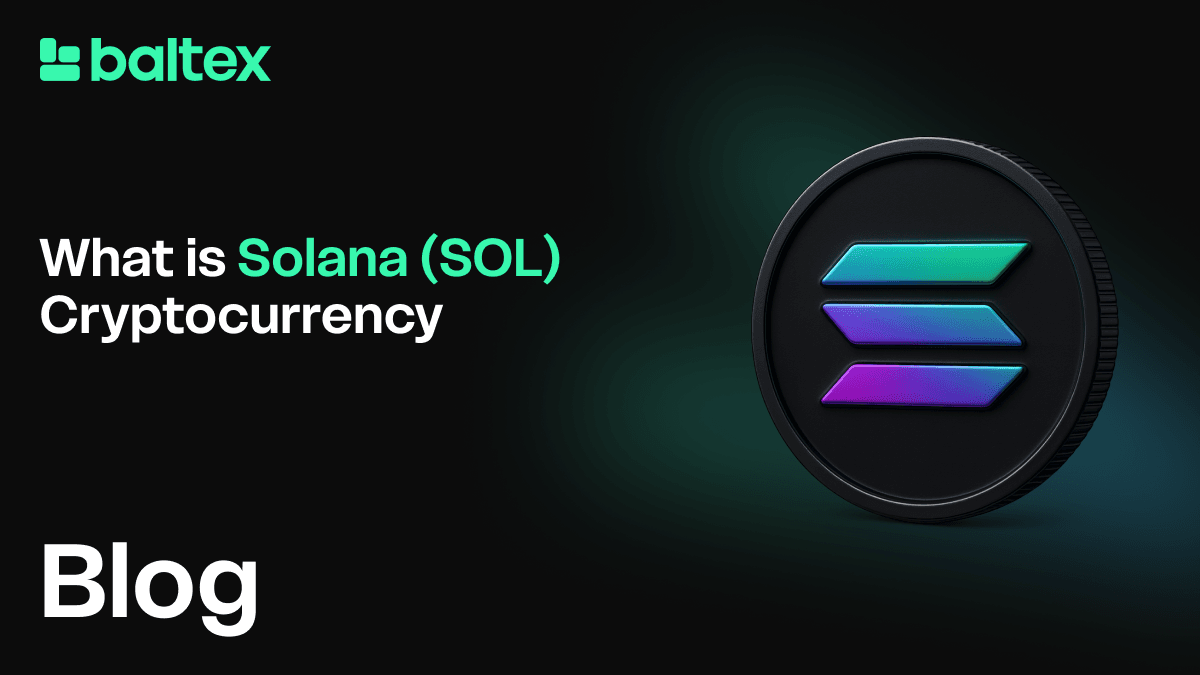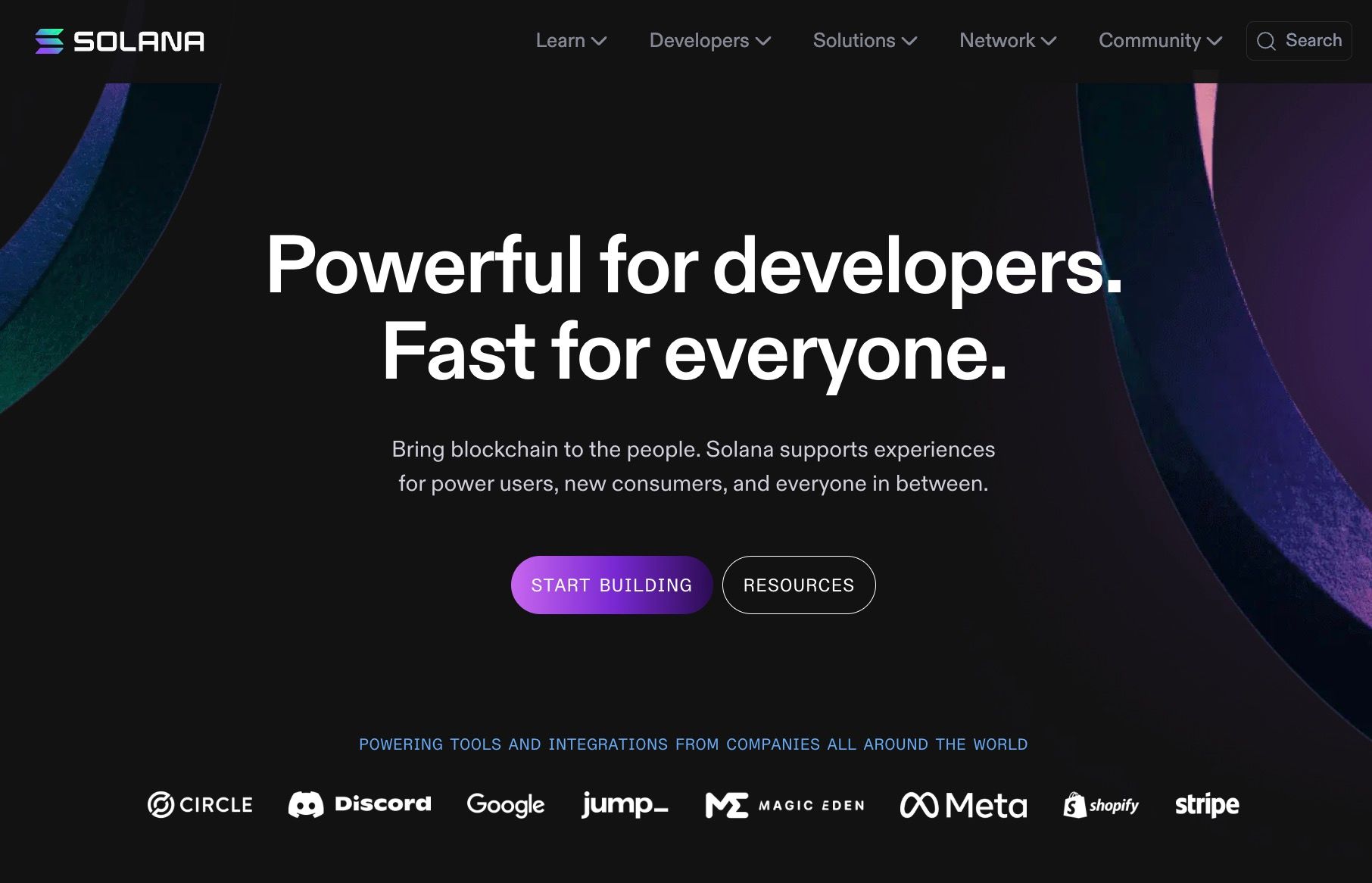
TL;DR: If you want the fastest possible overview of how does Solana work, think of it as a high-speed blockchain that uses a special clock-like mechanism (Proof of History) to stamp transactions. This design helps Solana process thousands of transactions per second, often at a fraction of a cent each. If you stay a bit longer, you will learn how it achieves those speeds, why developers flock to it, and how you might explore cross-chain swaps using Baltex.io if you are ready for a broader crypto adventure.
Solana is a decentralized computing platform designed to handle an incredible number of transactions per second compared to many other blockchains. At its core, it is all about efficiency. It can run decentralized applications (dApps) and support a growing ecosystem of finance tools, gaming projects, and marketplaces. You will see it referred to by its ticker, SOL, which is both the name of its native cryptocurrency and the way you pay for transactions on the network.
People often come to Solana for speed. The network boasts lightning-quick confirmation times, meaning your transactions, trades, or transfers go through faster. This efficiency is a major selling point, especially for developers seeking a smooth user experience.
Solana’s popularity rests on three main pillars: speed, low transaction fees, and a harmonious developer community. Traditional blockchains like Bitcoin can feel a bit sluggish or expensive when there is high traffic. Solana tries to solve that by going full throttle on throughput (how many transactions it can process each second). Combined with fees that are typically fractions of a cent, it is an attractive launchpad for decentralized finance (DeFi) projects and other apps where performance and cost matter.
On top of that, there is a welcoming vibe among Solana developers. You will find open-source resources, community-run projects, and ongoing support that help new dApps pop up regularly. This constant innovation keeps Solana in the crypto spotlight.

In everyday terms, blockchains have to confirm and record each transaction. Solana wants to do this at top speed without sacrificing security. Most blockchain networks rely on widely known mechanisms like Proof of Work (Bitcoin) or Proof of Stake (Ethereum’s newest iteration). Solana’s twist is a secondary system called Proof of History, which processes transactions in a chronological chain of events.
Imagine a giant cryptographic stopwatch. Proof of History sets a verifiable timeline, so every transaction gets a time label. You can think of it like a GPS timestamp telling you exactly when something happened with near-foolproof certainty. Once you know the exact moment a transaction occurred, you can sequence thousands of them quickly. This means no waiting around while the network figures out what transaction came first.
It does not replace a consensus mechanism. Instead, it runs alongside Solana’s version of Proof of Stake to let the entire process zip along at an impressive pace. Because all nodes in the network reference this cryptographic clock, everyone trusts the timestamps, and they can bundle transactions very efficiently.
Along with Proof of History, Solana uses a consensus model called Proof of Stake (PoS). In PoS, you stake your SOL (lock it up) to help validate the network. In return, you earn potential rewards if you follow the rules and keep the network honest. If you act maliciously, you risk losing your staked tokens.
Here is how it ties together:
Thanks to these mechanisms, Solana’s validators confirm transactions with minimal slowdown, giving the network its hallmark speed.

Developers who build decentralized applications often complain about slow speeds or expensive fees on other networks. Solana answers that with performance that can rival traditional tech infrastructure. If you are launching a trading platform, for instance, you obviously do not want users to wait ages for an order to settle. By leveraging Solana, you can potentially deliver a near-instant experience with minimal fees that keep your app efficient and user-friendly.

This speed has sparked a host of innovative dApps on Solana, including marketplaces, social media platforms, video game integrations, and even real-time data analytics. If you are a developer, that means you can dream big without worrying as much about your app slowing to a crawl when traffic spikes.
One reason developers choose Solana is how the network’s throughput can scale. The typical concern is: more users on a network means longer wait times and higher fees. Solana’s architecture is designed to keep costs predictable, even under heavy loads. That consistency is huge in a world where sudden spikes in demand can bring other blockchains to a standstill or cause fees to skyrocket.
Over time, Solana’s team aims to keep the network robust enough for mainstream-scale adoption, whether that is for DeFi, NFTs (unique digital collectibles), or entirely new use cases we have not seen yet. This wide-open future is part of what makes the community so enthusiastic.

One of the most hands-on ways to get involved with Solana is through staking. By staking your SOL tokens, you help secure the network and validate transactions. As a reward, you can earn additional SOL, somewhat like earning interest in a savings account. Staking does come with risks, though, including the possibility of slashing if the validator you choose misbehaves. It is always smart to research trustworthy validators before staking any cryptocurrency.
Here is a quick snapshot of how to get started:
It is generally a passive process, so once you set it up, you mostly watch your rewards grow. Still, keep an eye on any announcements or updates from your chosen validator, just to be safe.
Solana’s low fees are a major part of its appeal. With transactions often costing a fraction of a cent, users can interact with dApps without feeling nickeled and dimed at every push of a button. People running complex applications or numerous transactions love that certain tasks that would be expensive on other chains remain cheap here.
Although governance on Solana is not as direct as some other networks, active users and validators help shape the future direction. Discussions around upgrades, new features, and potential changes often happen in open forums or community calls. You can follow these discussions to get a sense of emerging improvements or even share your thoughts.

If you want to move value between different blockchain ecosystems, cross-chain swaps can be your friend. Swaps let you trade tokens from one chain for those on another—like exchanging SOL for ETH—without going through multiple manual steps or centralized exchanges in the process.
Baltex.io is one platform that facilitates these cross-chain swaps. Suppose you hold SOL but also dabble in Ethereum-based DeFi. You might want to transfer value across the networks seamlessly. Baltex.io offers a user-friendly route to do just that, letting you keep your focus on using the tokens rather than wrestling with complicated bridging processes.

By using a cross-chain solution, you embrace a more interconnected blockchain world. This approach helps you explore DeFi opportunities, NFT marketplaces, or trading strategies beyond a single ecosystem, which is one reason so many in crypto are excited about bridging solutions.
Solana sets itself apart as a high-performance blockchain designed to tackle a classic hurdle: how to process a ton of transactions quickly and cheaply. It combines Proof of History and Proof of Stake to boost efficiency without compromising security. For you, that means faster transactions, significantly lower fees, and a flourishing community of builders.
Whether you are an investor, a developer, or just crypto-curious, Solana’s ecosystem has something to offer. You can stake SOL, explore lightning-fast dApps, or even dive into cross-chain swaps on platforms like Baltex.io to broaden your horizons. If you are new to Solana, consider testing a small transaction first to see the speed in action. Once you feel comfortable, there is plenty more to discover, from earning staking rewards to tapping into diverse DeFi projects.
Solana can be a great place to start, especially if you are looking for lower transaction fees. The community around Solana is fairly welcoming, and many guides or tutorials exist to help newcomers get set up. Still, it is wise to begin with small amounts or simulated environments until you are confident in the process.
In many cases, yes. Solana’s architecture lets it handle far more transactions per second than Ethereum in its classic form. While Ethereum has shifted to Proof of Stake, it still has scaling challenges. Solana’s design aims to process thousands of transactions almost instantly. That said, Ethereum is pursuing layer-2 solutions and future upgrades to boost speed and capacity.
With staking, you rely on validators to operate honestly. A validator that underperforms or acts maliciously can result in your staked tokens being partially slashed (a penalty). You also face market risks, because the value of SOL can fluctuate. Some people find those risks acceptable, especially if they research reputable validators, but it is critical to understand them before locking in your tokens.
Yes. However, running your own Solana node requires a certain level of technical know-how, computer hardware, and stable internet connectivity. It is not overly complicated, but you need to keep your node updated and secure. Before diving in, you may want to try delegating your stake to an existing node to learn the ropes.
You can store SOL in a few ways. One option is a software wallet that integrates directly with Solana’s dev tools. Another is a hardware wallet that keeps your private keys offline. Whichever route you choose, make sure you back up your seed phrases and passwords securely. Double-check that the wallet you select actually supports Solana to avoid any compatibility headaches.
A final note: remember that crypto markets can be unpredictable. Always do your own research, keep track of official Solana updates, and stay cautious with any new tools or platforms you try. If you take sensible precautions, Solana can offer a fast, low-fee blockchain environment that is both practical and innovative for all kinds of crypto ventures.